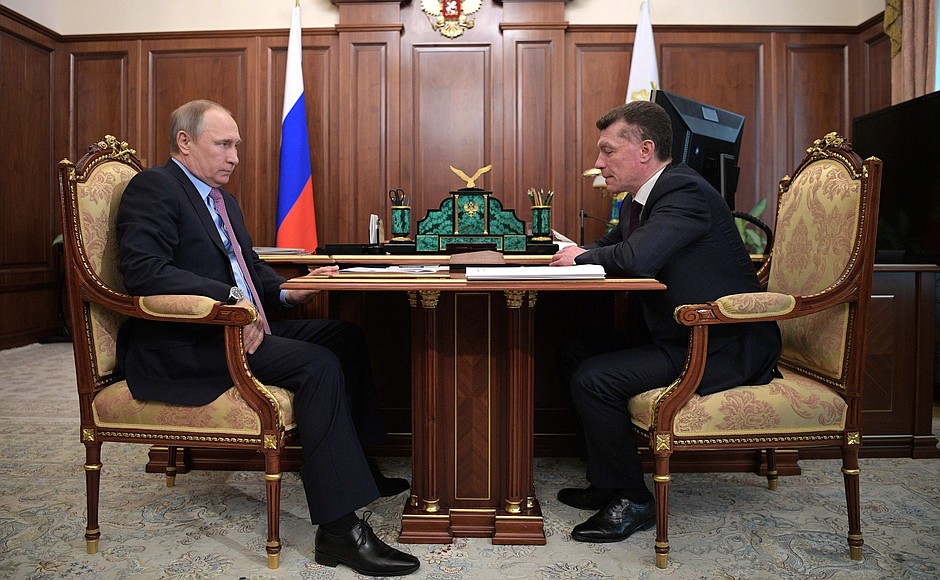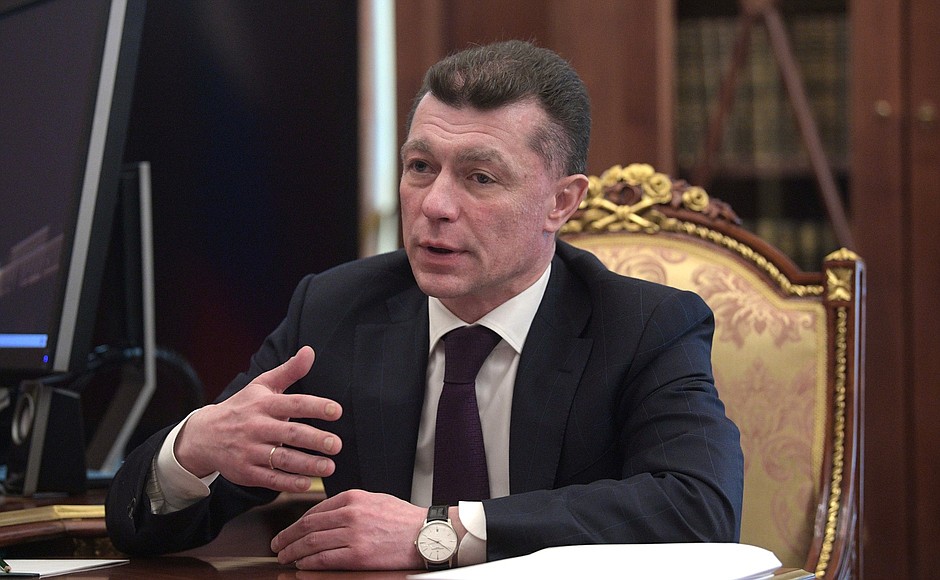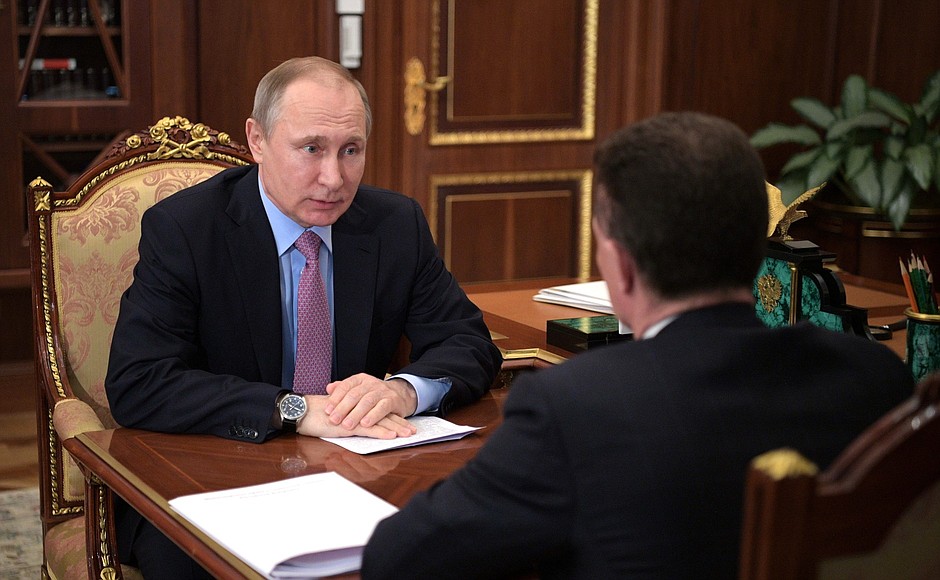President of Russia Vladimir Putin: Mr Topilin, I would like to discuss with you not only current social policy issues but also the upcoming trends that we will definitely encounter due to a number of objective circumstances.
We are certainly happy with the natural population growth. We have achieved this as a result of persistent efforts to stimulate and support births, motherhood and childhood. Life expectancy is growing even faster than we expected and planned. These are, without a doubt, the results of our combined efforts.
At the same time, we know about the problems that lie in store for us and that date back to the 1990s, when the country experienced a massive, if not disastrous, decrease in the number of births.
As a result, in the very near future (experts know this very well) the number of women of reproductive age will decline, and by 2025, according to experts, their numbers will fall by 34 percent compared to 2015.
However, there is no getting away from that, because this is what we inherited from the not so distant past, from the 1990s. In this connection, the structure of our population will be changing as well. The burden on the working-age population will increase. The number of elderly people will grow while the number of births, due to objective circumstances, will evidently decline.
Needless to say, we should and we will attempt to stimulate births and will continue the policy of supporting motherhood and childhood but we need to adjust social policy as a whole. This is what I would like to discuss with you and I propose we start with this.
Minister of Labour and Social Protection Maxim Topilin: Mr President,
Yes, the birth rate fell in the 1990s, compared to the significant increase in the birth rate 2 generations after the Great Patriotic War. There was an upsurge in the birth rate after the Great Patriotic War, when people returned from war and started families.
Vladimir Putin: This is a post-crisis phenomenon.
MaximTopilin: There was a substantial increase in the 1970s and 1980s as well. In the 1990s, the picture changed dramatically for understandable reasons, and the ‘war waves’ had their impact. In other words, the demographic situation has always depended here on various crises or conflict situations, and Russia was hit repeatedly by such waves during the twentieth century. In the 1990s, practically every year – in 1991, 1992, and in 1998–1999 – we lost practically 150,000–200,000 births every year.
Vladimir Putin: Population decrease was close to 1 million a year.
MaximTopilin: By 2006, when you set the task of drafting the new demographic project, and when the executive order on developing demographic processes was signed, we had natural population loss of around 650,000–700,000 a year.
The demographic measures that we adopted in 2006 and then in 2010 and 2012 have without question made the main contribution to producing the situation we see today. I remember that no one believed that the childbirth capital programme would produce results; no one believed that these financial incentives would work. Everyone thought this was impossible.
The objective economic picture and growing incomes all went together. The measures we took did produce results, results that, as you have said, no one expected, because the overall birth ratio, the number of children per woman of reproductive age, had fallen as low as 1.1, and when we began the demographic programme it was 1.3.
Vladimir Putin: It is 1.76 now.
MaximTopilin: 1.76, 1.75 – Rosstat [National Statistics Agency] is updating the figures. We have reached the goal we set ourselves.
I would like to reiterate that according to experts, it is extremely important that measures to stimulate births are constantly expanding. Thus, in 2006–2007, there was maternity capital and a significant growth in benefits.
At that time, we first introduced benefits for nonworking, uninsured women. That produced an upsurge. If we look at the charts, there is a surge in the number of births and the aggregate birth rate.
In 2010–2011, land programmes were launched. They are working better in some places and worse in others, but overall that also produced a certain increment. In 2013, allowances for third-born children were introduced, that was when we put forth the goal of providing incentives for the birth of a third, rather than second child.
Federation regions receive about 15–16 billion rubles a year to make these payments. They are regional [payments] and ensure a subsistence level for a child. At present, this is 10,000 [rubles a month]. It is an impressive level, significant support for the family.
We have always sought, in keeping with your directives, to use such purely demographic measures as maternity capital to support families’ current incomes, because this is also very important.
For three years, there was natural growth, not very large but a natural growth compared to the minus 600,000 in 2006 that I mentioned earlier. At present, we are considering and analysing this situation with experts. Indeed, it was predictable.
Today women in the 20–39 age bracket – the core childbearing category – number a little more than 22 million. That number will steadily fall until 2035, when there will be about 15–16 million. This figure basically should not change because all of them have already been born and are children now.
Vladimir Putin: 7.1 [million].between 20 and 29.
Maxim Topilin: Between 20 and 39.
Vladimir Putin: And between 20 and 29, it is 7.1 million.
Maxim Topilin: Yes. Today we need to continue what we started, proceeding from what I said, proceeding from the fact that we believe that demographic measures to stimulate births are working.
Secondly, these measures require constant adjustment, constant expansion, given the rather serious decline in the number of reproductive-age women. We need to work out additional measures to stem this trend.
I believe we have everything that is needed at the very least to prevent a significant drop in the number of births so as to neutralise these negative trends as much as possible.
<…>



